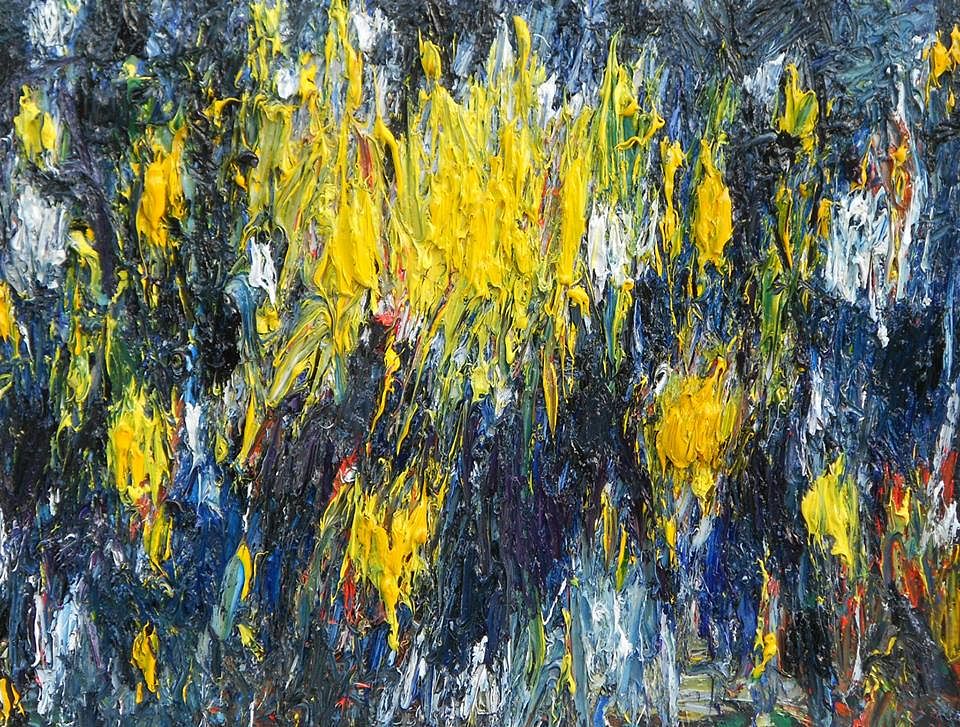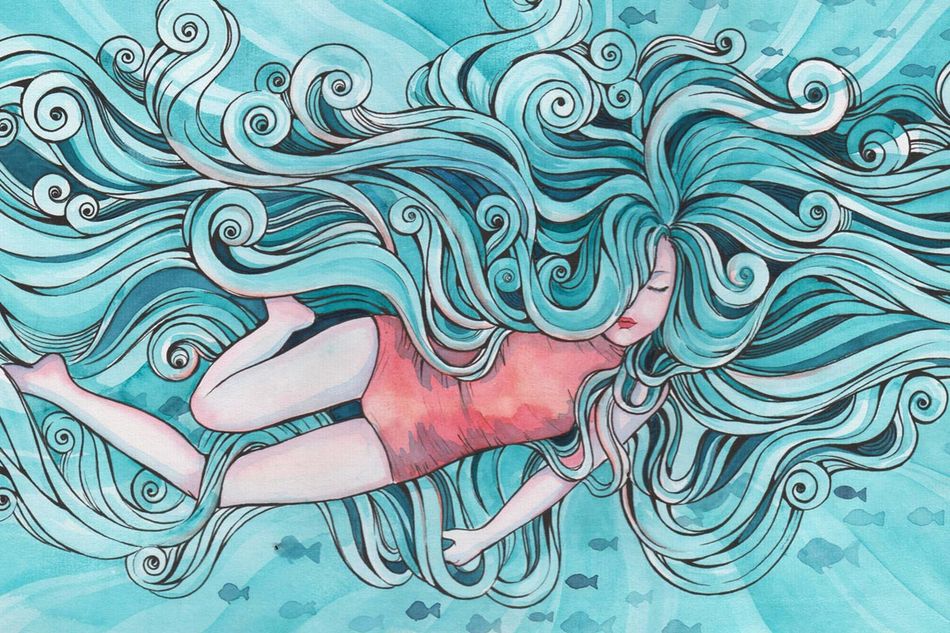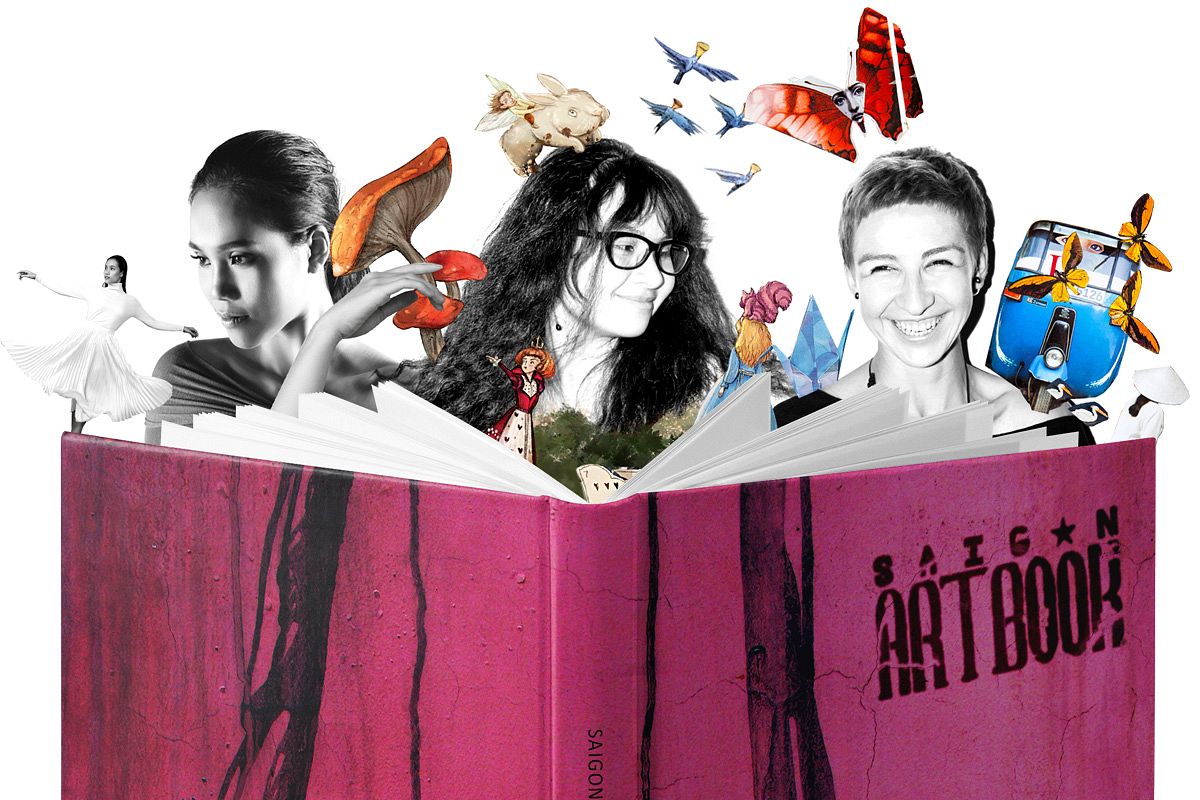Cave paintings, the Latin poet Lucretius, the slavery of consumerism and, more prominently, the evolution between mankind and nature are some of the ingredients effortlessly intertwined in the riveting and, at times, eccentric exhibition A Material History of Man and Animal, currently on display at Dia Projects.
Though A Material History of Man and Animal marks the first solo exhibition by Richard Streitmatter-Tran in Vietnam, the artist is not new to the Vietnamese art scene. His artwork has appeared in various spaces across the country, including the MAM Projects at Hanoi's Women’s Museum. He has collaborated with local artists in group exhibitions, mentored artists-in-residence at San Art Laboratory and, in 2010, founded the non-profit Dia Projects, a contemporary art experiment that encompasses both art production and exhibition throughout the city.
A Material History consists of ten pieces – installations, a painting, a drawing and sculptures – in different media, such as food, iron, pastel and charcoal, wood and clay. Each piece is part of a greater puzzle that reminds us of the long and rich relationship between animals and men than spans numerous centuries and disciplines, from science to politics, literature to philosophy.
A row of gauzy, LED-lit skulls (Fragile Matter) welcomes visitors outside the entrance of the gallery. The installation refers to the Cambodian genocide and reflects on how we, both as a collective and as individuals, deal with the aftermath of one of the most horrific examples of human violence in history.

Fragile Matter (2013), Sculptural Installation - Bánh Tráng (rice paper), Acrylic shelving, LED lights, Dimensions variable (Linear).
With a luminescence that comes from within, the skulls cannot go unnoticed: they demand a closer investigation, but their fragility stops us from doing so. Made with rice paper, Fragile Matter ties in with Streitmatter-Tran's previous work, namely Material Turn and September Sweetness, for which he employed everyday materials – specifically food – for his sculptures.
Although the show does not have a condemning tone – rather, an investigative one – the theme of human violence reappears in the Human Trap and De Rerum Natura, only this time the oppressive brutality takes the form of greed and religion. The Human Trap is a two-meter iron trap modeled from an everyday Vietnamese mouse trap. A cube of gold replaces the cheese, luring humans in. Just like animals, humans are oblivious prey who realize too late that we have been captured but, unlike our animal counterparts, we have planted the bait ourselves. Our inability to analyze our own nature and motivations stands in contrast to our success in understanding that which drives other creatures. It is our observation and understanding of other animals that has made us so effective at suppressing them and, in many cases, contributing to their extinction.
De Rerum Natura takes its name from the well-known poem by Latin poet Lucretius, who was inspired by the philosophy and physics of Epicurus. One of the pivotal points in Epicurean physics revolves around the belief that deities do not control the universe and that men’s unhappiness is caused by the fear of being punished by these mystical forces.
The positive and negative influences that religion has on today’s world remains as evident as it was in ancient times, so the merging of a modern tool like a weight bench with traditional Buddha heads as weights seems fitting. Are we, once again, voluntarily oppressing ourselves and, by doing so, moving further away from the laws of nature that control the universe? Or are these weights making us fitter to survive and to live in harmony with nature?

Corpus Callosum (2015), Sculpture - Iron, steel, unfired porcelain, glass, liquid, LEDs, 115 x 130 x 90 cm.
Although animal rights have been gaining support and attention since the 19th century, the philosophers of Positivism and the technological progress of the Industrial Revolution have helped to reinforce the idea that men are superior to animals. This erroneous, anthropocentric view of the exchanges and mutual influences between men and animals is exemplified in several of Streitmatter-Tran's exhibits.
An authentic, re-used fishing boat sits at the center of the gallery. The keel of the boat, made with wood and unfired porcelain, resembles the skeleton of a whale. As Streitmatter-Tran explains in his folio: “The early humans that first crossed waters on boats likely looked to the animals of the sea for inspiration. DaVinci’s early designs for flight were adaptations of bat-like wings, the simple fishing boats of today still inherit the biodesign of the animal.”

A Short History of Man and Animal (2015), Sculpture - Wood, iron, unfired porcelain, 700 x 160 x 70 cm.
The significance of whales for mankind can also be found in The Cerumen Strata, a wall-mounted sculpture which consists of layers of beeswax and charcoal, representing the scientific discoveries achieved after analyzing whale earwax. As Streitmatter-Tran explained during the exhibition’s opening, scientists found that whale earwax, like the rings on a tree trunk, not only tell us about the age and physiology of the animal but also the climate and natural changes that happened in the sea during the animal’s life. Since whales live an average of 100 years and are the only sea creature to cover long distances, this provides us with vital information about our own shared environment.
The artist continues to disprove the human-superiority theory in the sculpture Primateriality, where he tackles the widespread assumption that our incomparable advancement in technologies, derived by our ability to use tools, positions us above other species and therefore justifies our indiscriminate impacts on the planet. Here a monkey is seen braiding a hanging vine, “demonstrating both the ability to envision a future and create complex patterns,” according to the artist.
A Material History of Man and Animal is a brilliant exhibition that has a cumulative effect on the brain as well as on the senses, stimulated by the diversity of the artistic materials used to elucidate the infinite correlations between man and nature.
A Material History of Man and Animal is on display until September 25.
103 Đồng Khởi, 2nd Floor, D1
08 38 238 188
10am – 6pm, Mon to Sat














